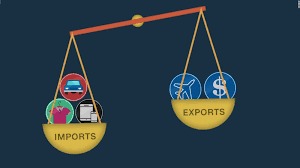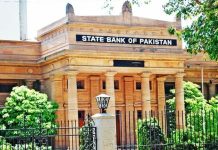ISLAMABAD: Though the risk of default has been averted with the funding from the International Monetary Fund, Pakistan should focus on long-term structural reforms to increase exports to bridge the widening trade and current account deficits.
It is to mention here that the State Bank of Pakistan’s (SBP) foreign exchange reserves decreased by $278 million to $8.35 billion as of September 16 as a result of meeting an external debt repayment obligation.
According to the SBP, the country holds total liquid foreign reserves of $14.07 billion with commercial banks holding $5.72 billion in net foreign reserves.
Towards the end of August, the SBP had received a tranche of $1.2 billion from IMF as the long-stalled Extended Fund Facility (EFF) was put back on track. The arrival of the much-needed funds has helped Pakistan build foreign reserves to some extent and keep the economy floating.
Pakistan has been desperately seeking dollar inflows to meet its balance-of-payments needs. In July, before the IMF money came, the rupee experienced its worst monthly performance in over 50 years due to a low level of foreign reserves.
The fund disbursed by the Washington-based lender would support the forex reserves and stabilise the local currency.
To help Pakistan meet the higher financing needs this fiscal year and unlock additional financing, the IMF’s executive board has agreed to extend the EFF until June 2023 instead of the earlier September 2022.
The board has also approved the augmentation of access by SDR720 million ($1 billion), bringing the total payments to be made to Pakistan to $6.5 billion.
After these developments, Pakistan stands a good chance that its foreign exchange reserves will reach $16 billion by the close of the financial year 2022-23. A major driving force behind this will be the additional funding that Pakistan will be able to access this fiscal year. For that Pakistan must also adhere to important IMF-agreed steps and continue taking economic stabilisation measures to achieve the targets set under the revived loan programme.
Pakistan’s gross financing requirements for FY23 will be approximately $30 billion for debt servicing and repayments.
A bailout from the IMF with additional support likely to come from friendly countries has helped Pakistan avert a default.
There have been loan rollovers from China totalling more than $4 billion, while Saudi Arabia, the United Arab Emirates and Qatar have committed $9 billion in investments and loans.
In a presentation given by the central bank in July, it stated that Pakistan’s external debt was low, primarily held by the public sector and sourced from concessional multilateral and bilate






